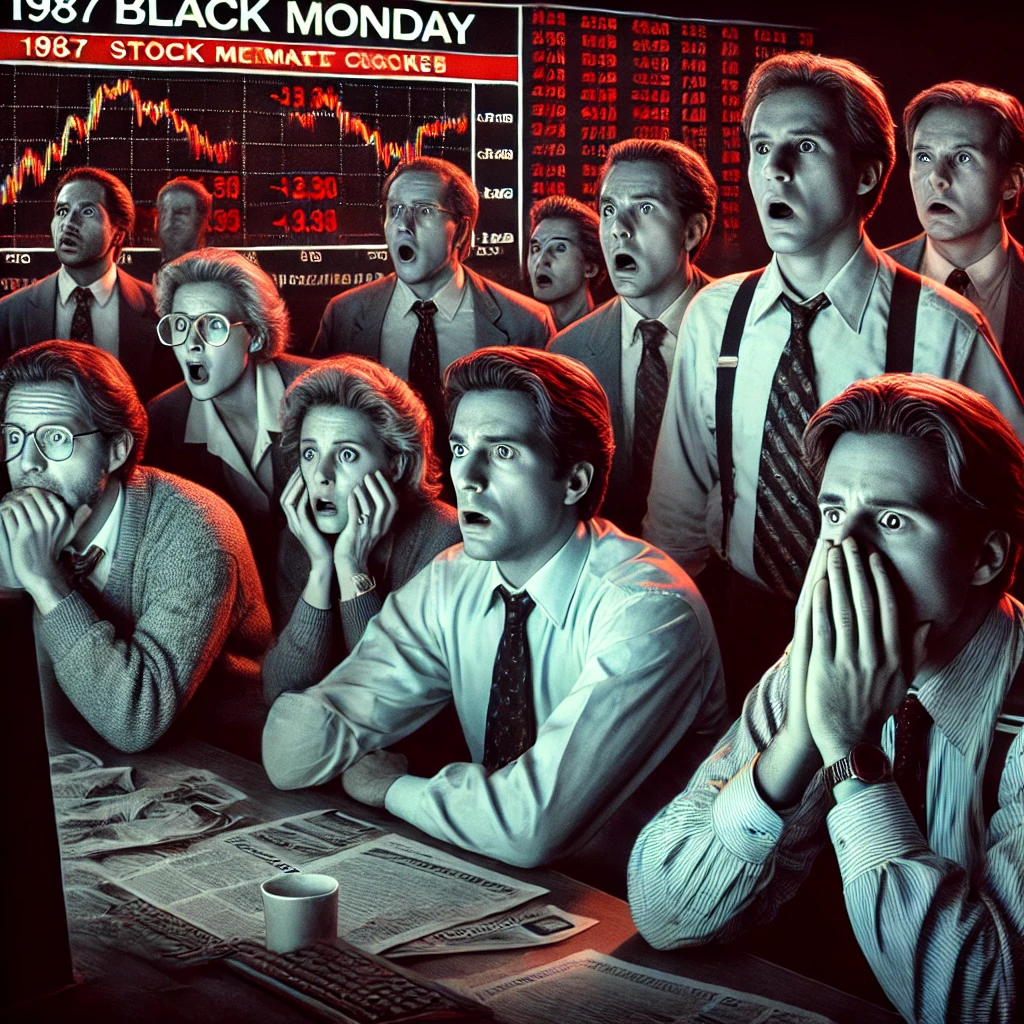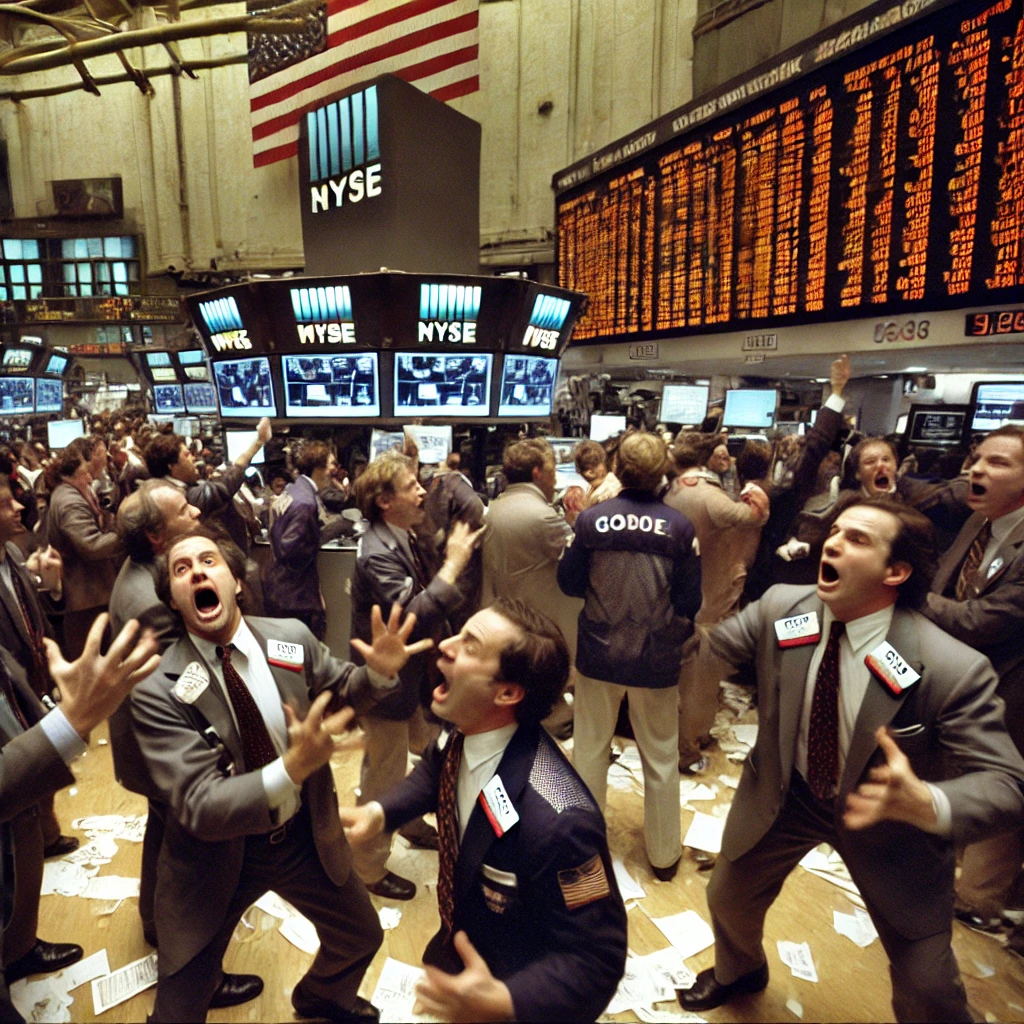On October 19, 1987, the Dow Jones Industrial Average (DJIA) experienced a catastrophic plunge, dropping nearly 23 percent in a single day. This unprecedented decline, often referred to as “Black Monday,” marked the largest one-day percentage drop in the history of the stock market and sent shockwaves through global financial systems. The events of that day not only reshaped investor confidence but also prompted significant changes in regulatory practices and market dynamics.

The Prelude to the Crash
In the months leading up to Black Monday, the stock market had experienced a significant rally, with the DJIA reaching record highs. However, this surge was accompanied by increasing volatility and speculation, raising concerns among analysts and investors about an impending correction. Economic factors, such as rising interest rates, a weakening dollar, and geopolitical tensions, added to the sense of unease in the market.
As October 1987 progressed, investor sentiment shifted dramatically. The combination of computer trading, which allowed for rapid selling in response to market fluctuations, and a growing fear of a market correction led to an environment ripe for panic. On October 19, the situation escalated as a wave of selling engulfed the market, causing the DJIA to plummet over 500 points by the end of the day.

The Market Reaction
The crash unfolded rapidly, with the stock market opening significantly lower and the sell-off intensifying throughout the day. Trading volume surged as investors scrambled to sell off their holdings, leading to delays and disruptions on the trading floor. The media broadcasted live coverage of the chaos, fueling public anxiety and uncertainty about the future of the economy.
The financial impact of Black Monday was profound. The DJIA closed at 1,738.74, a staggering drop from the previous day’s close of 2,246.74. The loss of nearly 23 percent represented a decline of approximately $500 billion in market value. The event reverberated through financial institutions, leading to immediate concerns about liquidity, solvency, and the stability of the global financial system.
Regulatory and Economic Implications
In the aftermath of the crash, regulators and policymakers recognized the need for reform to prevent similar occurrences in the future. The rapid sell-off highlighted vulnerabilities in the market, particularly regarding the role of computerized trading systems. In response, the Securities and Exchange Commission (SEC) implemented new regulations aimed at improving market transparency and enhancing the ability to manage volatility.

Additionally, central banks around the world, including the Federal Reserve, intervened to stabilize the financial system. The Fed provided liquidity to banks and financial institutions to prevent a broader economic crisis. These actions contributed to the recovery of the markets in the months that followed, but the events of Black Monday left a lasting mark on investor psychology and regulatory practices.
Lasting Legacy of the 1987 Crash
The stock market crash of 1987 remains a significant event in financial history, serving as a reminder of the inherent volatility and unpredictability of markets. It underscored the importance of investor education and the need for robust risk management practices. In subsequent years, the crash prompted discussions about the implications of technology and algorithmic trading on market stability.
Furthermore, Black Monday shaped public perception of the stock market, reinforcing the idea that dramatic fluctuations could occur unexpectedly. The lessons learned from this crash influenced both investors and regulators, prompting ongoing debates about market dynamics, speculative behavior, and the role of government in maintaining financial stability.
The Dow Jones Industrial Average’s nearly 23 percent plunge on October 19, 1987, marked a historic moment in the annals of financial history. The chaos of Black Monday highlighted the complexities of the stock market and the interconnectedness of global economies. As we reflect on this pivotal event, we recognize its enduring impact on regulatory practices, investor behavior, and the evolution of financial markets. The legacy of the 1987 crash serves as a vital reminder of the need for vigilance, transparency, and adaptability in an ever-changing financial landscape.
